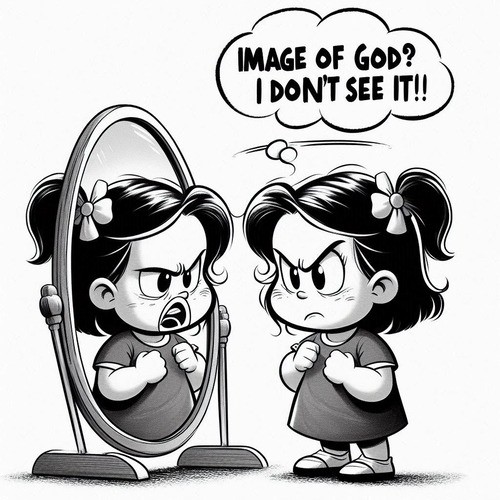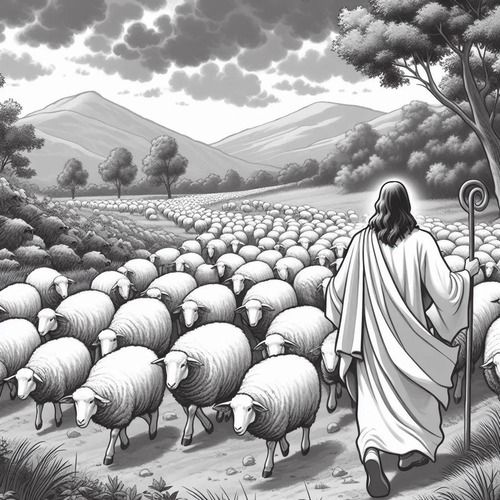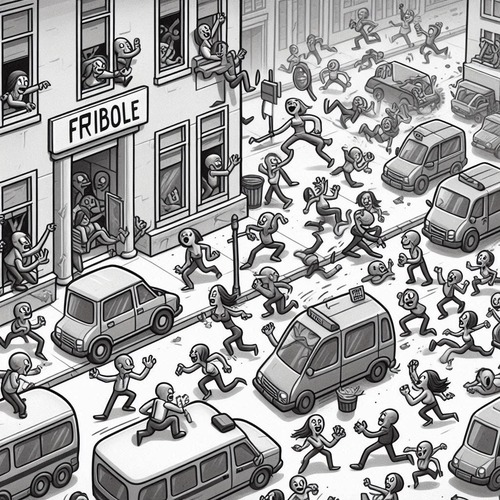Imago Dei: What Does It Mean To Be Made in God’s Image?
“Made in the image of God.” These six words from Genesis carry profound implications for our identity as human beings. They tell us why every human life has infinite worth, why we yearn for purpose, and why we’re capable of both spectacular achievements and devastating failures.
When God declared, “Let us make man in our image, after our likeness” (Genesis 1:26-27), He was establishing a fundamental truth that sets us apart from all other creation. We’re divine image-bearers, created to reflect God’s character and represent His authority in creation. It’s foundational to understanding who we are and why we’re here.
In Reformed theology, this doctrine of the imago Dei helps us understand everything about human nature and destiny. It explains our capacity for creativity, our desire for relationships, our sense of moral responsibility, and our longing for transcendent purpose. In an age where people desperately search for identity and meaning—often in all the wrong places—this biblical truth offers profound answers to life’s deepest questions.
The Reformed Heritage: What It Means to Be Made in God’s Image
- Calvin’s Revolutionary Insights: John Calvin didn’t just teach about the image of God—he helped us see its revolutionary implications. First, he showed us Adam and Eve were created in original righteousness. This wasn’t just moral perfection; it was a state of perfect harmony with God’s purposes. Second, Calvin emphasised three remarkable qualities that reflected God’s image in Adam and Eve: true knowledge of God and His will; genuine righteousness in all relationships; and pure holiness in heart and actions.
- Building on Strong Foundations: Later Reformed thinkers expanded this rich understanding. Herman Bavinck helped us see how God’s image isn’t just in our souls but encompasses our entire being—body, mind, and spirit. His insights show us why everything from our physical work to our intellectual pursuits can glorify God. Louis Berkhof brought systematic clarity by showing how being made in God’s image affects both who we are (our capacity for relationship with God) and what we do (our calling to represent God in the world).
Biblical-Theological Analysis
Old Testament Foundation: The image of God in man first appears in the creation account of Genesis. Our creation as male and female highlights the relational aspect of the imago Dei, as we were made to live in community. The royal-functional dimension also emerges here, as God commands Adam and Eve to exercise dominion over creation, reflecting His authority and stewardship. The representational role of humanity in the Old Testament shows us we’re not only reflections of God’s image but also agents of His will on earth.
New Testament Development: The New Testament provides a fuller understanding of what it means to be created in God’s image. Colossians 1:15 identifies Christ as the perfect image of the invisible God. In Christ, we see the flawless representation of what humanity was meant to be. Through His redemptive work, believers are being renewed in His likeness (Col. 3:10, Eph. 4:24). This renewal has profound eschatological implications, pointing to the day when the image of God in man will be fully restored.
Components of Being Made in God’s Image
What makes us unique as image-bearers of God? The answer lies in both who we are and what we’re called to do.
Structural Aspects: Who We Are
- Our rationality and intelligence: Our ability to think, reason, and make decisions reflects God’s own rational nature. Consider how we’re uniquely equipped with the capacity for deep, rational thought—an echo of divine wisdom that enables us to contemplate everything from the mysteries of the cosmos to the intricacies of moral philosophy. This isn’t merely about intelligence; it’s about our ability to recognise truth, beauty, and goodness in ways that reflect God’s own character.
- Our moral consciousness: Perhaps even more remarkably, we possess an innate moral consciousness. That persistent inner voice distinguishing right from wrong isn’t just a product of evolution or social conditioning—it’s a divine imprint, a reflection of God’s righteous nature within us. Even in our fallen state, this moral compass points toward our Creator, though sin often distorts its reading.
- Our spiritual capacity: Our spiritual capacity sets us apart in creation as beings who can truly know and commune with God. Unlike any other creature, we can engage in meaningful worship, experience divine love, and respond to God’s grace.
- Our relational nature: As beings made in the image of a triune God, we’re created for community and deep, loving relationships. Our deeply relational nature mirrors the perfect community of the Trinity. We’re not designed for isolation but for rich, meaningful relationships—with God and with each other.
Functional Aspects: What We’re Called To Do
Our role as God’s representatives involves specific functions:
- Cultural mandate: Genesis 1:28 outlines humanity’s task to be fruitful, multiply, and fill the earth, developing culture and society in line with God’s purposes. Whether we’re creating art, building cities, advancing technology, or tending gardens, we’re fulfilling our role as creative image-bearers.
- Stewardship and dominion: We’re not mere consumers or accidental residents of this planet; we’re appointed caretakers, charged with exercising responsible dominion. This calling requires wisdom to balance development with preservation, progress with protection—all while reflecting God’s own care for His creation.
- Representation of God’s authority: Finally, as image-bearers, we represent God’s authority in the world. This isn’t about domination but about reflecting God’s just and loving rule. In our families, workplaces, and communities, we’re called to exercise leadership and influence in ways that mirror God’s character—with justice, mercy, and humility.
Effects of the Fall: A Reformed View on Total Depravity
The Fall marred, but did not destroy, the image of God in man. Reformed theology teaches total depravity affects every aspect of human nature, leaving us morally corrupted and spiritually dead. However, while our moral ability has been lost, our natural abilities—such as reason and creativity—remain through common grace. The Reformed doctrine of man holds that, even in our fallen state, we retain our status as divine image bearers, though this image is distorted.
Areas of Impact: The effects of the Fall are seen in our knowledge of God: our ability to truly know and understand God has been darkened. Our inherent righteousness was lost, replaced by sin and rebellion. And likewise, it has impacted our relationships: Our relationship with God and others has been fractured, leading to alienation and conflict.
What After the Fall? Our Restoration in Christ
Through Christ’s redemptive work, the image of God in man is progressively restored. In sanctification, believers are conformed more and more to the image of Christ. This transformation is a work of the Holy Spirit, who renews us in knowledge, righteousness, and holiness. The ultimate renewal of the imago Dei will take place in the resurrection, when believers will perfectly bear the image of the heavenly man (1 Cor. 15:49). Oh, what a day that promises to be!
So what are the practical implications for the imago Dei of our restoration? As we grow in Christlikeness, we begin to reflect God’s image in our daily lives. We treat others with respect and dignity, as they too bear the imago Dei.
Applications of the Imago Dei for Our Times
The doctrine of the image of God in man forms the basis for the sanctity of life, from conception to death. We begin to see divisive issues such as abortion, euthanasia, and racial justice as God sees them. Every person, regardless of status or ability, possesses inherent dignity and worth as a divine image-bearer.
As Christians, we’re also called to engage with culture in ways that reflect our identity as God’s image-bearers. This includes:
- Work and vocation: Viewing our labour as an expression of the cultural mandate, contributing to the flourishing of society.
- Environmental stewardship: Caring for God’s creation as responsible stewards.
- Scientific advancement: Pursuing knowledge and discovery in a way that honours God’s creative design and purpose.
Conclusion The Reformed understanding of the image of God in man offers a robust, biblically-grounded perspective on human identity, purpose, and dignity. While the image has been marred by sin, the hope of the gospel is that through Christ, it is being progressively restored. As we seek to reflect God’s image more fully, we are reminded of the ultimate hope we have in the final restoration of all things.
Related FAQs
How does being made in God’s image shape a Christian’s view of human life and the world? The doctrine of imago Dei fundamentally transforms how Christians see everything around them. We recognize every human being—regardless of their condition, beliefs, or actions—as bearing inherent dignity and worth as God’s image-bearer, which deeply affects how we treat others and approach social issues. This understanding also affects how we view creation itself, seeing it not as mere resources to be consumed, but as God’s handiwork entrusted to our care. Moreover, it shapes how we understand human creativity, culture, and work—seeing these not as merely secular activities but as expressions of our image-bearing nature. This comprehensive worldview leads Christians to approach everything from bioethics to environmental stewardship with a distinct perspective that honours both Creator and creation.
- Does sin completely destroy the image of God in us? While sin severely damages and distorts the image of God in humans, it doesn’t completely destroy it. Every human being, even after the Fall, retains aspects of God’s image—which explains why even unbelievers can display remarkable creativity, wisdom, and moral insights. This preservation of the divine image, though marred, provides the foundation for human dignity and the possibility of redemption. God’s common grace ensures that aspects of His image remain evident in all people, though only through Christ can the image be progressively restored to its intended glory.
- What are the practical implications of a restored image of God in believers’ lives? As the Holy Spirit progressively restores God’s image in believers, profound changes occur in both character and conduct. Believers begin to exhibit increasing wisdom, righteousness, and holiness—not through mere behaviour modification, but through genuine heart transformation. This restoration affects everything from how we handle relationships and conflicts to how we approach our work and cultural engagement. We find ourselves growing in compassion, developing a deeper love for truth and justice, and experiencing a greater desire to glorify God in all aspects of life. The restored image also leads to a growing sense of purpose as we better understand and fulfil our role as God’s representatives in the world.
How should understanding the image of God affect our treatment of those with disabilities? The doctrine of imago Dei powerfully affirms that all human beings, regardless of physical or mental capacity, bear God’s image fully. This truth completely rejects any notion that human worth depends on abilities, intelligence, or contribution to society. Instead, it teaches us to see each person as inherently valuable, leading us to advocate for their dignity, provide compassionate care, and include them meaningfully in community life. This understanding calls us to move beyond mere accommodation to genuine appreciation of how each person uniquely reflects aspects of God’s image.
- How does being made in God’s image relate to our use of technology and social media? Understanding ourselves as image-bearers should guide how we engage with and develop technology. Our creative and communicative capacities reflect God’s nature, making technological advancement a potentially good expression of our image-bearing status. However, this same understanding requires us to evaluate how technology affects our relationships, our character development, and our ability to fulfil our image-bearing purpose. We must ensure that our use of technology enhances rather than diminishes our ability to reflect God’s character and fulfil our calling as His representatives.
Our Related Posts
Editor's Pick
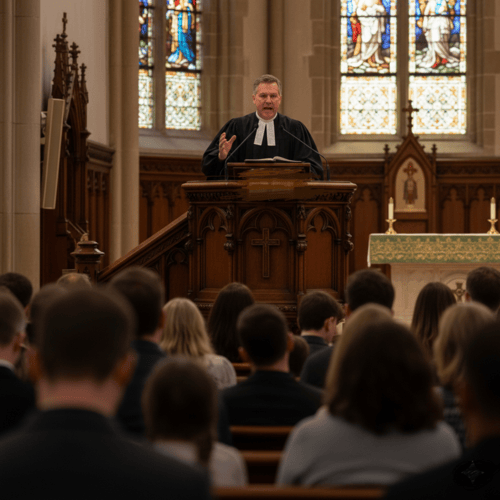
Faithful to the Pattern: Why Paul Reserves Ordination for Men
Few topics in contemporary Christianity generate more tension than women’s ordination. This question touches real lives, genuine callings, and deeply [...]

‘Flee Sexual Sin’: Why Does Paul Single This Sin Out?
When the apostle Paul writes to the Corinthian church, he doesn’t tell them to simply avoid sexual immorality or resist [...]

Does Denying God’s Sovereignty Mean Denying the Gospel?
RC Sproul once warned denying God’s sovereignty “eviscerates” grace—a strong word meaning to gut or disembowel something, leaving only an [...]
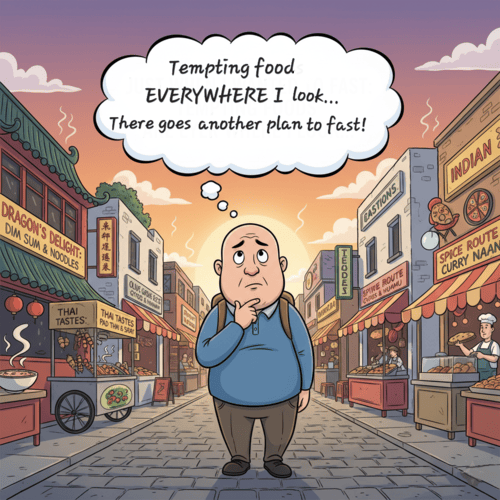
Why Christians Fast: The Biblical Discipline’s Very Real Rewards
Why would Christians, who rejoice in the good gifts of food and fellowship, deliberately choose to go without? Isn’t fasting [...]

The Christian Sabbath: Why Did Sunday Replace Saturday?
Consider this: God-fearing Jews who’d faithfully observed Saturday Sabbath for over a thousand years suddenly began gathering for worship on [...]
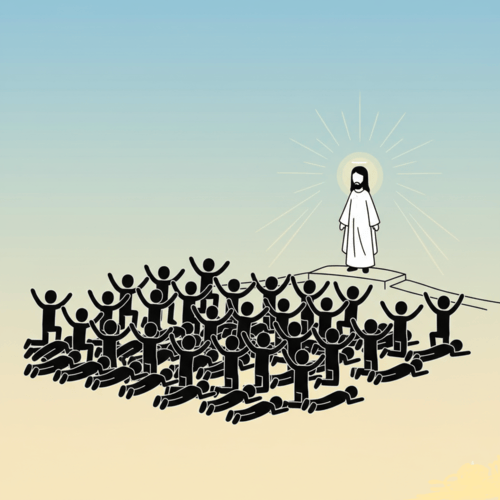
Did the Early Christians Worship Jesus? The Biblical Evidence
It was a startling transformation: Jewish fishermen who'd spent three years following this itinerant carpenter from Nazareth now begin to [...]

If Jesus is Messiah, Why Aren’t ALL Messianic Prophecies Fulfilled?
If Jesus is truly the Messiah, why hasn't world peace arrived? Why do Jews still face persecution? Why isn't the [...]

When Courage Fails: Will I Be Forgiven If I Deny Christ in Persecution?
The rooster crowed, and Peter remembered. In that devastating moment, the apostle realised he’d just done the unthinkable—three times he’d [...]

What Makes a Godly Dad? 5 Biblical Principles Fathers Need
Modern culture sends fathers mixed messages. Be strong but sensitive. Be involved but not overbearing. Lead but don’t dominate. With [...]

What Makes a Godly Mom? A Scripture-Backed Guide
In our culture’s confusion about gender roles and parenting, the timeless question remains: what makes a godly mother? While secular [...]
SUPPORT US:
Feel the Holy Spirit's gentle nudge to partner with us?
Donate Online:
Account Name: TRUTHS TO DIE FOR FOUNDATION
Account Number: 10243565459
Bank IFSC: IDFB0043391
Bank Name: IDFC FIRST BANK


